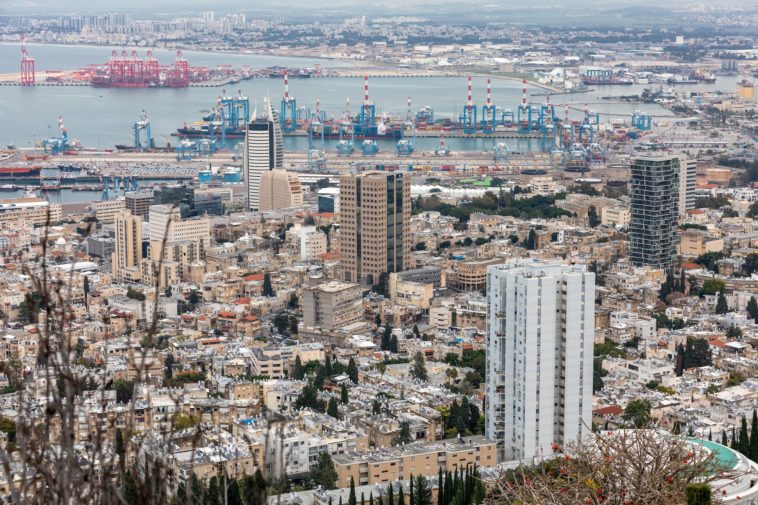Located in the northern part of Israel, Haifa stands as the region’s most populous city and ranks third in terms of size within the country itself. The city boasts a resident count exceeding 268,000. In the immediate vicinity, several other towns and smaller cities like the Krayot, Tirat Carmel, Daliyat al-Karmel, some Kibbuzim, and Nesher add approximately 300,000 people to the overall populace. The amalgamation of these adjacent areas with Haifa results in a unified urban sprawl that accommodates close to 600,000 individuals. This cluster of settlements constitutes the heart of the Haifa metropolitan zone.
Geographic Location and Demography
Geographic Details
- Longitude and Latitude: 32.7940° N, 34.9896° E
- Climate: Mediterranean
- Continent: Asia
Demographic Information
- Population: Approximately 268,000 (Haifa alone); Nearly 600,000 (Haifa metropolitan area)
- Official Languages: Hebrew (primarily), Arabic
- Currency: Israeli New Shekel (₪)
- Religion: Predominantly Jewish, but with notable minorities of Muslims, Christians, and Druze.
Historical Significance
Haifa has a rich tapestry of history woven through its streets. It has been a part of the Ottoman Empire, the British Mandate, and now modern-day Israel. The city’s historical significance is amplified by the presence of landmarks like the Baha’i Gardens, which is a UNESCO World Heritage Site. Moreover, Haifa has been a center for coexistence, with people of various religions and ethnicities living in harmony for generations.
Economic Profile
Economic Information
- GDP: Contributed significantly to Israel’s overall GDP (figures are subject to change)
- Major Industries: Petrochemicals, High-Tech, Medicine, and Tourism
Haifa serves as an economic powerhouse not just for the northern region but for Israel as a whole. The city’s ports are among the busiest in the country, handling a large volume of international trade. The city is also a hub for high-tech innovation, medicine, and tourism, providing a substantial boost to the country’s economy.
Transportation and Connectivity
Types of Public Transportation Available
- Buses
- Carmelit Underground Railway
- Trains
Haifa’s transportation infrastructure is well-developed and connects the city with other parts of Israel. Buses are a common mode of public transport, with the Carmelit underground railway serving as a rapid transit system within the city. Moreover, train services connect Haifa to other major cities in the country, offering efficient travel options for both residents and visitors.
Education and Cultural Highlights
Leading Educational Institutions
- University of Haifa
- Technion – Israel Institute of Technology
Major Cultural Venues
- Haifa Museum of Art
- Tikotin Museum of Japanese Art
Education is a cornerstone of life in Haifa, with the University of Haifa and the Technion – Israel Institute of Technology standing as prime examples. These institutions not only cater to local students but also attract international scholars. On the cultural front, Haifa is home to several museums and galleries, such as the Haifa Museum of Art and the Tikotin Museum of Japanese Art, that celebrate both local and global heritage.
Conclusion
In summary, Haifa is more than just a northern Israeli city; it’s a dynamic and diverse metropolitan area that holds significance in various aspects such as history, economy, and culture. With a well-integrated community and advanced infrastructure, Haifa is a city that is steadily progressing while preserving its rich past.





